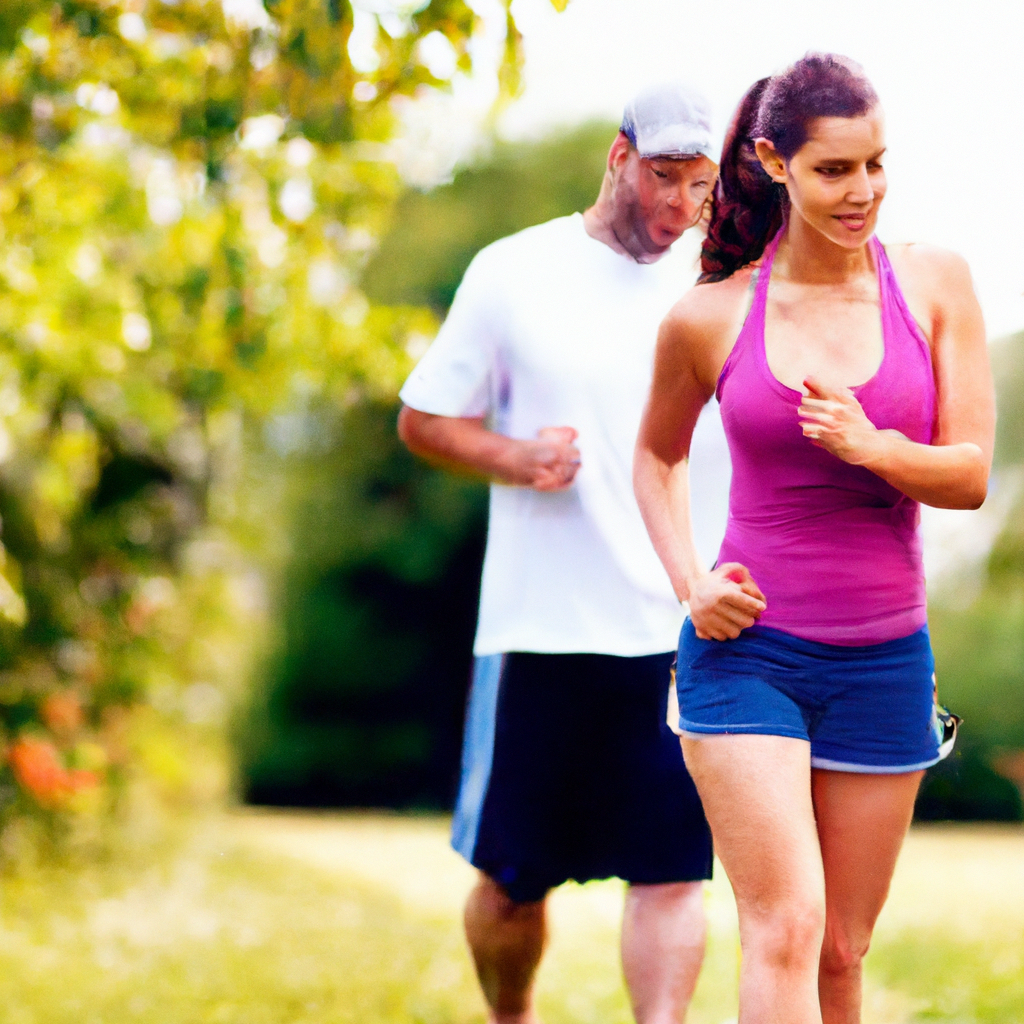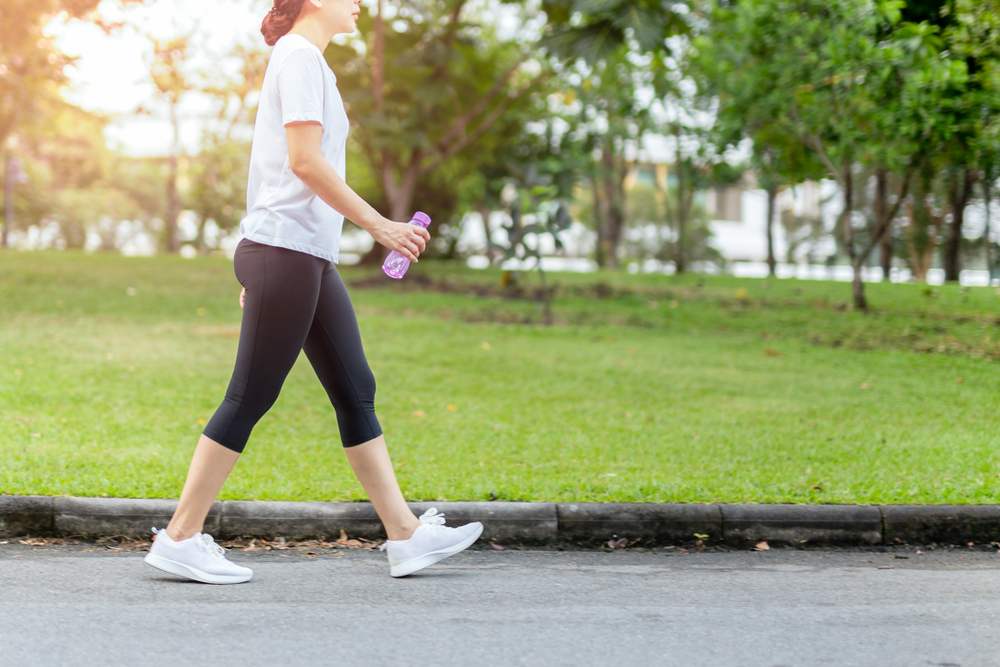Are you eager to find a simple, effective solution to shed those stubborn belly fats? Look no further; we have the answer for you! In this article, we will reveal the most effective walk for targeting belly fat and achieving your fitness goals. Get ready to discover a simple yet powerful exercise that will have you on your way to a trimmer waistline in no time. So, slip on your walking shoes and let’s get started!
1. Speed Walking
Benefits of Speed Walking
Speed walking is a great exercise choice for those looking to burn calories and shed belly fat. One of the main benefits of speed walking is its ability to increase your heart rate and engage multiple muscle groups. By walking at a brisk pace, you can boost your metabolism and elevate your fat-burning potential. In fact, studies have shown that speed walking can help you burn up to 400 calories per hour, depending on your body weight and intensity level. Additionally, speed walking improves cardiovascular health, strengthens bones, and enhances overall fitness.
Tips for Speed Walking
To get the most out of your speed walking routine, it’s important to maintain proper form and technique. Start by wearing comfortable, supportive shoes and clothing that allows you to move freely. Begin with a warm-up period of gentle walking to gradually prepare your muscles for more intense activity. As you start speed walking, focus on maintaining a brisk pace that challenges your cardiovascular system, but still allows you to carry on a conversation. Swing your arms naturally, keeping them bent at a 90-degree angle, and maintain an upright posture with your gaze forward. Finally, cool down with a few minutes of slower walking and finish with stretching exercises to prevent muscle soreness.
Duration and Frequency
When it comes to speed walking, consistency is key. Aim for at least 30 minutes of speed walking per day, five days a week. If you’re short on time, you can split your session into two or three shorter walks throughout the day. As your fitness level improves, gradually increase the duration and intensity of your walks to continue challenging your body. Consider incorporating speed walking into your daily routine by walking to work, taking the stairs instead of the elevator, or going for a brisk walk during your lunch break. With time and dedication, speed walking can become a rewarding habit that helps you achieve your fitness goals.
2. Power Walking
Benefits of Power Walking
Power walking, also known as race walking, is a faster-paced walking style that requires a specific technique involving a faster stride and a defined arm swing. This high-intensity form of walking provides numerous benefits for belly fat reduction. Power walking engages a larger number of muscle groups, including your legs, glutes, core, and upper body, resulting in increased calorie burn and improved overall body strength. Additionally, power walking enhances cardiovascular endurance, improves posture, and helps to build bone density.
Tips for Power Walking
To make the most of your power walking workouts, focus on maintaining proper form and technique. Keep your elbows bent at a 90-degree angle and swing your arms vigorously back and forth, following the natural movement of your legs. Make sure to maintain a faster pace than regular walking, taking shorter, quicker steps while rolling through your feet from heel to toe. Engage your core muscles by keeping them tight, and maintain an upright posture with your shoulders relaxed. Lastly, remember to breathe deeply and rhythmically to deliver an optimal oxygen supply to your muscles.
Duration and Frequency
To experience the benefits of power walking, aim for at least 30 minutes of continuous power walking, three to five times per week. Gradually increase the duration and intensity of your workouts as your fitness level improves. To add variety, you can include intervals of higher intensity power walking, alternating with periods of moderate-paced walking. This will help keep your workouts challenging and prevent plateaus. As with any form of exercise, it’s essential to listen to your body and take rest days as needed to avoid overtraining and reduce the risk of injury.

3. Brisk Walking
Benefits of Brisk Walking
Brisk walking is a moderate-intensity exercise that provides numerous benefits for those aiming to reduce belly fat. By maintaining a brisk pace, you can elevate your heart rate, increase calorie burn, and improve cardiovascular health. Brisk walking also helps to strengthen leg muscles, including your quadriceps, hamstrings, and calves, while providing a low-impact workout that is gentle on your joints. Moreover, regular brisk walking can help lower blood pressure, reduce the risk of chronic conditions such as heart disease and type 2 diabetes, and boost your overall mood and mental well-being.
Tips for Brisk Walking
When engaging in brisk walking, start by selecting comfortable shoes that provide adequate support and cushioning. Begin your walking session with a few minutes of slower-paced walking to warm up your muscles before gradually increasing your pace. Maintain a brisk pace that feels challenging but sustainable, aiming for a level of intensity where you are able to speak but not sing comfortably. Swing your arms naturally, increasing your arm swing slightly compared to a regular walking pace. Lastly, remember to cool down with a few minutes of slower walking and stretch your muscles to prevent tightness and improve flexibility.
Duration and Frequency
To reap the benefits of brisk walking, aim for at least 150 minutes of moderate-intensity aerobic activity, such as brisk walking, per week. This can be divided into 30 minutes of brisk walking on most days of the week. If you’re short on time, you can break your sessions into shorter bouts, such as three 10-minute walks per day. As your fitness level improves, consider adding intervals of faster-paced brisk walking to challenge your body. Remember to listen to your body and gradually increase the duration and intensity of your walks to avoid overexertion and injury.
4. Interval Walking
Benefits of Interval Walking
Interval walking is a highly effective way to burn calories and target belly fat. By incorporating periods of higher-intensity walking into your routine, you can boost your metabolism, increase your aerobic capacity, and stimulate fat loss. Interval walking alternates between short bursts of high-intensity walking or power walking and recovery periods of slower-paced walking. This type of workout challenges the body, improves cardiovascular fitness, and can be a time-efficient option for those with busy schedules.
Tips for Interval Walking
To perform interval walking, start with a warm-up period of 5-10 minutes of brisk walking. After the warm-up, transition to a high-intensity interval by walking at a faster pace or incorporating power walking techniques for 1-2 minutes. During the high-intensity interval, push yourself to the upper limits of your comfort zone, ensuring that you can maintain good form and proper breathing. Follow the high-intensity interval with an equal or longer recovery period of slower-paced walking. Repeat the intervals for a total of 20-30 minutes, and finish with a cool-down period of 5-10 minutes of slower walking. As with any high-intensity exercise, listen to your body and gradually increase the intensity and duration of your intervals over time.
Duration and Frequency
To incorporate interval walking into your fitness routine, aim for at least two to three sessions per week, with each session lasting 20-30 minutes. As you progress, you can increase the duration or number of intervals within each session. It’s important to give your body time to recover between interval workouts, so avoid performing them on consecutive days. Take rest days or engage in lower-intensity workouts, such as brisk walking, on the days between interval sessions to allow your body to adapt and avoid overtraining.

5. Uphill Walking
Benefits of Uphill Walking
Uphill walking, also known as incline walking, provides significant benefits when it comes to burning belly fat. Walking uphill engages more muscles compared to walking on a flat surface, resulting in a higher calorie burn and increased muscle tone. Uphill walking targets the glutes, hamstrings, calves, and core muscles, helping to strengthen and tone these areas. Additionally, uphill walking improves cardiovascular fitness, enhances bone density, and can be a great way to challenge yourself mentally and physically.
Tips for Uphill Walking
Before starting your uphill walking session, make sure to wear appropriate footwear with good traction to prevent slips. Begin with a proper warm-up of 5-10 minutes of flat or moderate-paced walking to prepare your muscles for the uphill climb. When walking uphill, maintain an upright posture, engaging your core muscles to support your spine. Take shorter, quicker steps, pushing through your toes and using your glutes and calves to propel yourself forward. Lean slightly into the hill while keeping your gaze forward to maintain balance. If you find it challenging to maintain a brisk pace uphill, feel free to slow down while focusing on the resistance provided by the incline.
Duration and Frequency
To reap the benefits of uphill walking, aim for 20-30 minutes of moderate-paced uphill walking two to three times per week. Start with a gradual incline and increase the steepness as your fitness level improves. If you don’t have access to hills or inclines, you can use a treadmill with adjustable incline settings to simulate uphill walking. Remember to progress gradually and listen to your body, especially if you’re new to this type of exercise. Over time, you can add variety by incorporating intervals of higher-intensity uphill walking or incorporating other walking styles.
6. Stair Walking
Benefits of Stair Walking
Stair walking is a highly effective form of exercise that targets the muscles in your lower body while providing a cardiovascular workout. It engages the glutes, quadriceps, hamstrings, and calves, helping to tone and strengthen these muscle groups. Walking up and down stairs also burns a significant amount of calories and can contribute to the reduction of belly fat. As a weight-bearing exercise, stair walking helps improve bone density, balance, and joint stability. Additionally, it can be a convenient and accessible form of exercise, as stairs are available in most environments.
Tips for Stair Walking
Start your stair walking session by warming up with a few minutes of gentle walking or climbing stairs at a slower pace. When walking up stairs, focus on planting your entire foot on each step and push through your heel to engage your glutes. Maintain an upright posture, keeping your gaze forward and avoiding leaning too far forward or backward. On the descent, control your speed and use your leg muscles to lower yourself, putting less strain on your knee joints. If you have access to stairs with handrails, you may use them for balance and guidance, but try not to depend on them too heavily to engage your core muscles.
Duration and Frequency
To incorporate stair walking into your fitness routine, aim for at least 15-30 minutes of continuous stair climbing two to three times per week. If you’re new to stair walking or find it challenging, start with a shorter duration and gradually increase it as your fitness improves. If you don’t have access to stairs at home or in your surroundings, you can use a stair climber machine at the gym or even climb up and down a single flight of stairs repeatedly. Alternatively, you can find outdoor locations with stairs, such as parks or stadiums, to add variety to your workouts.

7. Hiking
Benefits of Hiking
Hiking provides a fantastic opportunity to enjoy nature while reaping numerous benefits for your physical and mental well-being. Walking on uneven terrain engages additional muscles and challenges your balance, resulting in a higher calorie burn compared to walking on a flat surface. Hiking also strengthens the lower body muscles, including the glutes, quadriceps, hamstrings, and calves, while improving joint flexibility. Being exposed to fresh air and natural surroundings has been shown to reduce stress levels, improve mood, and enhance overall mental health. Additionally, hiking can be a social activity, allowing you to bond with friends and family while exploring new trails.
Tips for Hiking
Before embarking on a hike, make sure to choose appropriate footwear that provides stability and protection for your feet. Start with shorter, less challenging trails if you’re new to hiking, gradually increasing the difficulty over time. Take breaks as needed to rest, hydrate, and enjoy the scenery. When hiking uphill, maintain a steady pace and focus on your breathing. On the descent, use caution and engage your leg muscles to control your movement and prevent joint strain. It’s also important to wear appropriate clothing for the weather conditions, bring enough water, and pack essentials such as sunscreen, a hat, insect repellent, and a small first aid kit.
Duration and Frequency
The duration and frequency of your hiking sessions will depend on your fitness level and the availability of hiking trails in your area. Aiming for 2-3 hours on the trails, including breaks, is a good starting point. Start with easier trails and gradually progress to more challenging ones to improve your endurance and strength. Hiking once a week can be sufficient to experience the benefits, but you can increase the frequency as you become more comfortable and eager to explore different trails. Remember to listen to your body, take breaks when needed, and gradually increase the distance and difficulty of your hikes to avoid overexertion.
8. Treadmill Walking
Benefits of Treadmill Walking
Treadmill walking is a convenient and accessible option for those who prefer an indoor exercise routine. Walking on a treadmill allows you to control the speed, incline, and duration of your workout, making it easy to customize your fitness regimen. Walking on a treadmill provides similar benefits to outdoor walking, such as improved cardiovascular health, calorie burn, and reduced belly fat. It also offers the advantage of being a low-impact exercise that is gentle on your joints, making it suitable for individuals with joint conditions or injuries.
Tips for Treadmill Walking
When using a treadmill for walking, start with a warm-up period of a slower-paced walk to prepare your muscles for the workout. Maintain an upright posture, with your hands lightly touching the handrails for balance if needed. Swing your arms naturally, and focus on taking smooth and comfortable strides. If you’re new to treadmill walking, start with a flat surface and gradually increase the incline as your fitness level improves. To challenge yourself, you can also incorporate interval training by alternating between periods of faster-paced walking and recovery periods of slower-paced walking. Finally, finish your workout with a cool-down period, gradually slowing down your pace before coming to a complete stop.
Duration and Frequency
To incorporate treadmill walking into your fitness routine, aim for at least 150 minutes of moderate-intensity aerobic activity per week. This can be divided into 30 minutes of treadmill walking on most days of the week. As your fitness level improves, consider gradually increasing the duration or intensity of your workouts by adjusting the speed and incline settings on the treadmill. To prevent monotony, you can also try incorporating different programs or pre-set workouts available on the treadmill. Remember to listen to your body, stay hydrated, and choose appropriate footwear to ensure your safety and comfort during treadmill walking.

9. Nordic Walking
Benefits of Nordic Walking
Nordic walking combines walking with the use of specially designed poles, providing an efficient full-body workout that engages multiple muscle groups. This form of walking originated in Finland and has gained popularity worldwide due to its numerous benefits. Nordic walking helps to burn more calories compared to regular walking, as the poles add resistance and activate the upper body muscles, including the arms, shoulders, and core. It also improves cardiovascular fitness, promotes better posture, and reduces impact on the joints. Nordic walking is suitable for all fitness levels and can be enjoyed by people of all ages.
Tips for Nordic Walking
To perform Nordic walking, start by selecting appropriate poles that are specifically designed for this activity. When walking, hold the poles in an angle behind you and plant them into the ground as you stride forward. As you push the poles back, engage your core muscles and swing your arms naturally. Maintain an upright posture and keep your gaze forward. Start with a warm-up period of slower-paced walking without using the poles to prepare your body for the workout. It’s important to choose a walking route that provides a stable surface for the poles to secure into the ground.
Duration and Frequency
To experience the benefits of Nordic walking, aim for at least 30 minutes of continuous Nordic walking three to five times per week. As your fitness level improves, you can increase the duration or intensity of your walks by incorporating intervals of faster-paced walking or adding hilly terrain. Nordic walking can be performed in various settings, such as parks, trails, or even urban environments. Consider joining a Nordic walking group or taking part in guided Nordic walking sessions to learn proper technique and enjoy the social aspects of this activity. As with any exercise, listen to your body, start gradually, and increase duration or intensity according to your comfort and fitness level.
10. Walking with Weights
Benefits of Walking with Weights
Walking with weights, also known as weighted walking, adds resistance to your walking routine, resulting in increased calorie burn and muscle engagement. This form of exercise targets a larger number of muscles, including the upper body and core, enhancing overall strength and toning. Walking with weights can help to improve bone density, boost cardiovascular fitness, and even improve balance and coordination. Additionally, by increasing your muscular effort during walking, you can elevate your metabolic rate and continue burning calories even after your workout is complete.
Tips for Walking with Weights
Before starting a weighted walking routine, choose appropriate weights such as dumbbells or ankle weights that suit your current fitness level. Begin with lighter weights and gradually increase the resistance as your muscles adapt and become stronger. Hold the weights in your hands, keeping your elbows relaxed by your sides, or strap ankle weights around your ankles. During your walk, focus on maintaining proper form and posture, engaging your core muscles, and swinging your arms naturally. As you progress, you can incorporate various arm movements, such as bicep curls or lateral raises, while walking to further challenge your muscles.
Duration and Frequency
To incorporate walking with weights into your fitness routine, aim for at least 20-30 minutes of continuous weighted walking two to three times per week. Start with a warm-up period of slower-paced walking without weights to prepare your muscles for the workout. As you progress, gradually increase the duration and intensity of your walks by adding additional weight or incorporating intervals of power walking or brisk walking. To avoid overloading your muscles and joints, listen to your body and choose appropriate weights that challenge you but still allow for proper form and comfort.
In conclusion, there are numerous forms of walking that provide benefits for belly fat reduction and overall health. Whether you choose speed walking, power walking, brisk walking, interval walking, uphill walking, stair walking, hiking, treadmill walking, Nordic walking, or walking with weights, each style offers unique advantages. The key is to find a walking style that suits your fitness level, preferences, and accessibility. Remember to start gradually, listen to your body, and consult with a healthcare professional if you have any underlying health conditions. By incorporating regular walking into your routine, you can enjoy the many physical and mental benefits while working towards your fitness goals. So lace up your shoes, grab a friend, and embark on a walking adventure that will leave you feeling healthier and more energized. Happy walking!







